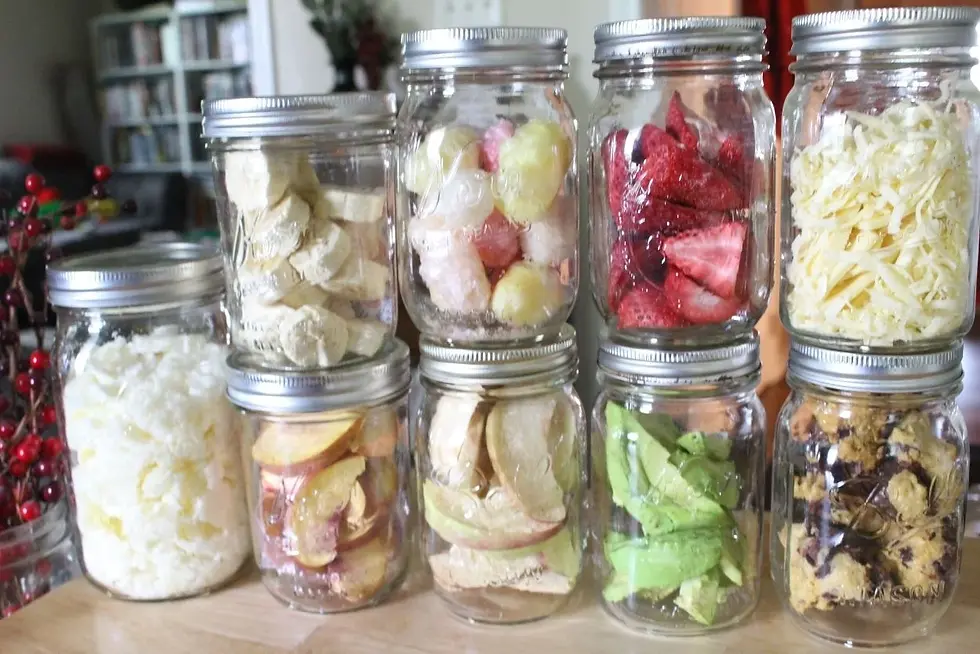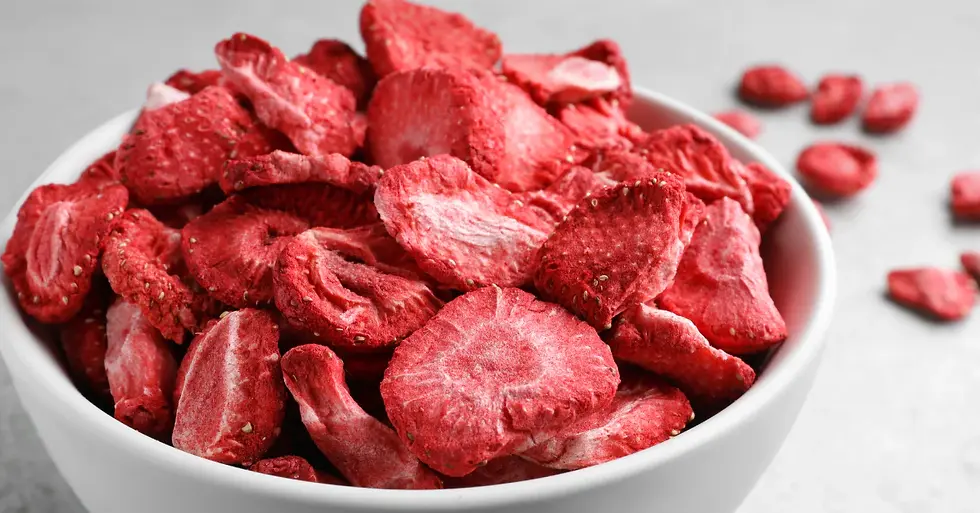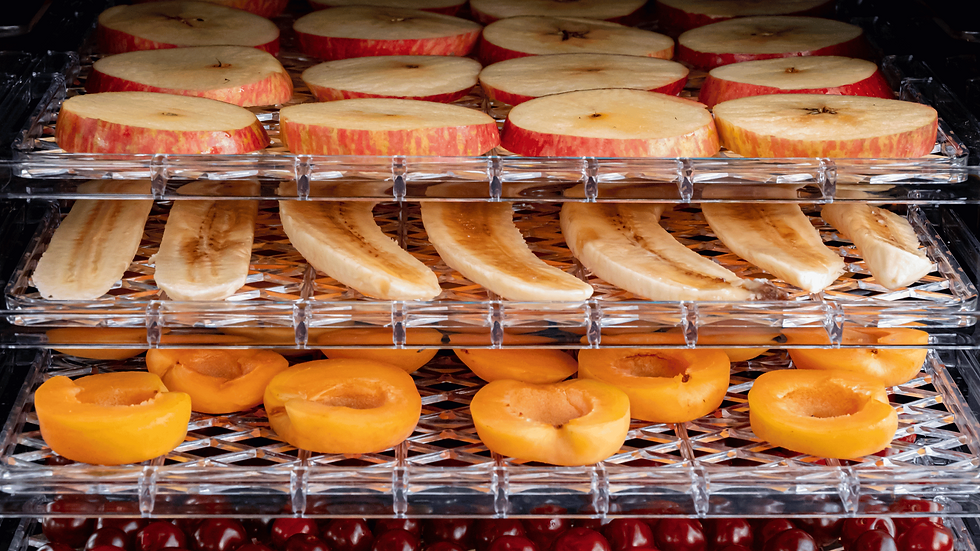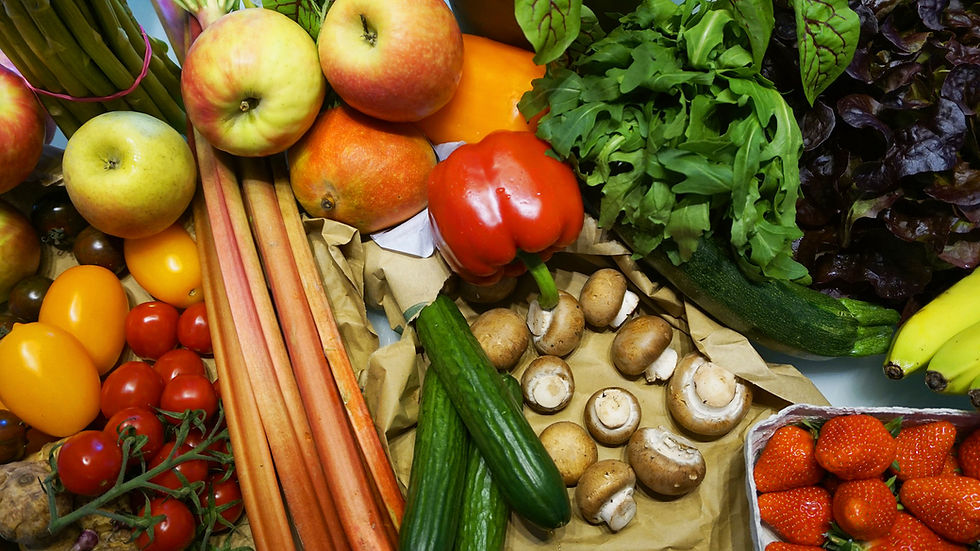Freeze Drying At Home
- Walid
- Jul 29
- 10 min read
Freeze Drying at Home
Freeze drying at home is becoming a popular method for preserving food, offering an exciting way to extend shelf life while maintaining nutritional value. This process removes moisture while retaining the original shape and texture of items, making it perfect for fruits, vegetables, and even meals. The beauty of freeze drying at home is that you can create long-lasting food supplies without relying on chemical preservatives.

How Does Freeze Drying Work?
The freeze drying process starts by freezing the food at very low temperatures. Once frozen, the moisture is removed through sublimation, transitioning directly from ice to vapor. This meticulous method ensures that the food retains its flavor, color, and nutritional integrity. Individuals looking into freeze drying at home will benefit from understanding these essential steps to achieve the best results.
Benefits of Freeze Drying at Home
There are numerous advantages to freeze drying at home that make it an appealing choice. Self-sufficiency and the ability to customize what you preserve are among the top benefits. Additionally, freeze drying reduces food waste and saves money by allowing you to store seasonal produce for year-round use.
Want to explore more? Head over to our homepage and see what we have to offer!
Extended shelf life
Retention of nutrients
Versatility in food selection
Reduced food waste
Food Item | Shelf Life (Years) |
Fruits | 15-25 |
Vegetables | 10-15 |
Cooked Meals | 5-10 |
Getting Started with Freeze Drying at Home
To start freeze drying at home, invest in a quality freeze dryer that suits your needs. Research different models and choose one with user-friendly features. Explore online resources or local classes that provide hands-on experience to build your skills and confidence.
This is just one of many great blogs we have—explore more right here.
Research freeze dryer models
Join online communities for tips
Practice with various foods
Keep a detailed log of experiments
"Freeze drying at home opens endless possibilities for food preservation, making it both a practical and enjoyable process!"
Want to make your cooking healthier? Try our dehydrated cabbage for quick cooking and retaining nutrients.
The Benefits of Home Freeze Drying
Freeze drying at home has become a popular method for preserving food while maintaining its nutritional value. This process removes moisture from various foods, allowing them to last significantly longer without the need for refrigeration. Not only does freeze drying preserve taste and texture, but it also saves money by reducing food waste. With these benefits, many are exploring the advantages of implementing freeze drying at home.
Check out our selection of dehydrated red bell peppers that are great in stews, soups, or as a quick meal accompaniment.

Nutritional Value Retention
One of the most significant benefits of freeze drying at home is the preservation of nutrients. Many traditional preservation methods like canning and dehydration can inadvertently diminish the food's nutritional content. Freeze drying, however, retains more vitamins and minerals, ensuring that you enjoy healthy, nutritious meals even months after the food was prepared.
Convenience and Versatility
Freeze drying at home offers incredible convenience as well. You can preserve a vast variety of foods, including fruits, vegetables, meats, and even entire meals. The versatility of this method means you can customize your freezer-dried foods according to personal preferences and dietary needs. Imagine having your favorite meals readily available, all with the long shelf life typical of freeze-dried foods!
Extended shelf life
Retains flavor and texture
Reduces food waste
Cost-effective preservation
Setting up a home freeze dryer is a worthwhile investment that pays off in the long run.
Food Type | Freeze Drying Time | Shelf Life |
Fruits | 6-12 hours | 10-25 years |
Vegetables | 8-24 hours | 10-20 years |
Meat | 20-36 hours | 15-30 years |
Cost Savings and Accessibility
By freeze drying at home, you can save substantial money on grocery bills. Foods that are in season can be freeze dried for future use, maximizing your investment. Additionally, the ability to preserve leftovers or bulk purchases for later ensures you're always getting the best value.
Want to explore more? Head over to our homepage and see what we have to offer!
Maximize seasonal purchases
Preserve leftovers efficiently
Enjoy meals anytime
“Home freeze drying not only saves money but allows you to enjoy your food long after it's harvested.”
Step-by-Step Process of Freeze Drying at Home
Freeze drying at home is an innovative way to preserve food while maintaining its nutritional value and flavor. The process involves removing water from food items through sublimation, ultimately resulting in lightweight, long-lasting products. To begin, gather your supplies, including a freeze dryer or use alternative methods, such as an oven or dehydrator, for a less traditional approach.
Check out our selection of dehydrated red bell peppers that are great in stews, soups, or as a quick meal accompaniment.

Preparing Your Food
The first step in freeze drying at home is preparing your food. Start by washing and cutting fruits or vegetables into manageable pieces. Blanching may enhance color and flavor retention, while preserving the integrity of the food. Always ensure your ingredients are fresh, as this directly affects the quality of the final product.
Freeze Drying Process
Once your food is prepared, it’s time to initiate the freeze drying process. If you have a home freeze dryer, simply place your food on the trays, select the appropriate settings, and let the machine do the work. Alternatively, for non-freeze dryer methods, freeze your food in a tray before transferring it into a dehydrator or oven.
Ensure food is properly sliced or portioned.
Freeze the food solid before the drying process.
Store the dried food in airtight containers.
The drying phase can take anywhere from 24 hours to several days, depending on the method and food type. Once completed, check for dryness by ensuring the food is crispy and has no residual moisture.
Food Type | Freeze Dry Time |
Fruits | 24-48 hours |
Vegetables | 24-36 hours |
Meats | 36-72 hours |
Final Steps
After the drying process, it’s important to store your freeze-dried food properly. Vacuum sealing and keeping them in a cool, dark place can enhance their shelf life. Regularly check your storage to monitor for any signs of moisture.
Store in vacuum-sealed bags.
Label containers with the date of preservation.
Check periodically for moisture or spoilage.
“Freeze drying at home offers an incredible opportunity for food preservation and can save you money while ensuring delicious meals for future enjoyment.”
Essential Equipment for Freeze Drying Success
If you're embarking on the journey of freeze drying at home, equipping yourself with the right tools is crucial for success. Understanding what equipment you'll need can streamline the process and produce better results. From freeze dryers to vacuum sealers, this guide will cover essential items to elevate your freeze-drying experience.
Freeze Dryer
The centerpiece of your freeze-drying setup is undoubtedly the freeze dryer itself. These machines come in various sizes and shapes, catering to different volumes of food. Investing in a quality freeze dryer can significantly impact the efficiency and quality of the results. Ensure you choose one that fits your specific needs regarding capacity and features.
Vacuum Sealer
A vacuum sealer is essential for ensuring the longevity of your freeze-dried products. Proper sealing prevents moisture and air from deteriorating your food. By vacuum sealing your items, you enhance the shelf life and maintain the integrity of your freeze-dried food. This piece of equipment is a must-have in your freeze drying at home toolkit.
Freeze Dryer
Vacuum Sealer
Storage Jars or Mylar Bags
Measuring Scales
Food Prep Tools (slicing knives, cutting boards)
Equipment | Purpose |
Freeze Dryer | Processes food for storage |
Vacuum Sealer | Preserves sealed food |
Storage Containers | Stores finished products |
Conclusion
With the right tools at your disposal, freeze drying at home can be a rewarding experience. Gather the essential equipment, and start exploring the delicious world of freeze-dried foods!
For camping or outdoor travel, dehydrated spinach is lightweight and easy to carry without compromising on nutrition.
“The right equipment can turn your freeze drying hobby into a successful endeavor!”
Freeze Drying vs. Other Preservation Methods
When it comes to food preservation, many methods exist, but freeze drying at home stands out for its unique approach. Unlike traditional methods such as canning or refrigeration, freeze drying removes moisture without compromising taste or nutritional value. This process not only extends shelf life significantly but also retains the texture and flavor of your food, making it a favorite among home chefs and survivalists alike.
Comparing Techniques
Let’s delve deeper into how freeze drying at home compares to other preservation techniques. Canning involves cooking food and sealing it in jars, which can alter its flavor and texture. Refrigeration and freezing, while effective, can lead to freezer burn and loss of quality over time. In contrast, freeze drying offers a longer storage life and minimal nutritional loss, making it an ideal option for those looking to stock up on healthy ingredients.
This is just one of many great blogs we have—explore more right here.
Advantages of Freeze Drying
The benefits of freeze drying at home include convenience and cost-effectiveness. Not only can you preserve a wide variety of foods, from fruits to meals, but you can also control what goes into your products without added preservatives. This method is perfect for those who wish to enjoy year-round access to seasonal produce.
Want to make your cooking healthier? Try our dehydrated cabbage for quick cooking and retaining nutrients.
Longer shelf life
Preservation of nutrients
Retains original flavor
Freeze drying offers significant advantages, especially for home cooks seeking versatility. A simple investment in a home freeze dryer can yield delicious, long-lasting results.
Preservation Method | Shelf Life | Flavor Retention |
Freeze Drying | 25+ years | Excellent |
Canning | 1-2 years | Good |
Refrigeration | Days to weeks | Variable |
Maximizing Your Preserving Skills
Ready to enhance your food preservation skills? Freeze drying at home can transform the way you store your food. With the right equipment, you can enjoy a range of benefits and try delicious new dishes year-round.
Invest in a quality freeze dryer
Start with fruits and vegetables
Experiment with meals and snacks
“Freeze drying at home not only maximizes the lifespan of your food but also keeps it delicious and nutritious.”
Best Foods to Freeze Dry at Home
Freeze drying at home allows you to preserve a variety of foods while maintaining their nutrients and flavors. Selecting the right items for this process is crucial for ensuring successful results. Common fruits, vegetables, and proteins can all be freeze-dried effectively. Remember, the food's moisture content significantly affects its freeze-drying success, so choose wisely to optimize your outcomes.

Fruits
Fruits like strawberries, apples, and blueberries are excellent candidates for freeze drying at home. Their natural sweetness and flavors concentrate beautifully through freeze drying, making them perfect for snacks or adding to cereals and smoothies. Plan to slice fruits into smaller pieces to enhance the drying process and achieve optimal results.
Vegetables
Vegetables are another great choice, with options like peas, carrots, and corn drying particularly well. When freeze drying vegetables at home, it's essential to blanch them beforehand to help preserve flavor and color. This step is crucial for maintaining their taste and texture during the freeze-drying process.
Bananas
Cucumbers
Spinach
Potatoes
Mushrooms
These foods not only retain their nutrients but also become lightweight and easy to store. They serve as fantastic additions to backpacking adventures or emergency food supplies.
Food Type | Preparation Required | Storage Duration |
Fruits | Sliced | Up to 25 years |
Vegetables | Blanched | Up to 20 years |
Meats | Cooked and diced | Up to 15 years |
Proteins
Meats, including chicken and beef, are ideal for freeze drying at home as well. Cooked and diced before freezing, they become lightweight and ready for your next meal. Proper packaging is key in preventing freezer burn, ensuring the best flavor and longevity.
Want to make your cooking healthier? Try our dehydrated cabbage for quick cooking and retaining nutrients.
Chicken
Beef
Fish
Pork
If you are looking for low energy consumption and high shelf life ingredients, dehydrated vegetable products are not to be missed.
These foods not only retain their nutrients but also become lightweight and easy to store. They serve as fantastic additions to backpacking adventures or emergency food supplies.
Food Type | Preparation Required | Storage Duration |
Fruits | Sliced | Up to 25 years |
Vegetables | Blanched | Up to 20 years |
Meats | Cooked and diced | Up to 15 years |
Protein
Dehydrated fine shallots provide a convenient and long-lasting shallot flavor when preparing instant seasoning packets.
Conclusion: Mastering Freeze Drying at Home
Freeze drying at home is an innovative and rewarding process that allows you to preserve the flavor and nutrients of your favorite foods. By using a home freeze dryer, you can extend the shelf life of fruits, vegetables, and even meals, making meal prep a breeze. Understanding the mechanics behind freeze drying is crucial to mastering this art. You can achieve professional-quality results by adjusting temperature, pressure, and time levels.
Understanding the Freeze Drying Process
The freeze drying process consists of three main stages: freezing, primary drying, and secondary drying. In the freezing stage, water in the food transforms into ice. During primary drying, the pressure is reduced, allowing ice to sublimate directly into vapor. Lastly, secondary drying removes any remaining moisture to create lightweight, shelf-stable food. This is just one of many great blogs we have—explore more right here.
Maintaining Food Quality
One of the essential secrets to successful freeze drying at home lies in selecting fresh, high-quality ingredients. Choose ripe fruits, fully matured vegetables, and well-cooked meals to ensure the best flavor retention. Additionally, proper pre-treatment, like blanching or cutting ingredients into uniform sizes, can enhance the quality of the final product. Want to make your cooking healthier? Try our dehydrated cabbage for quick cooking and retaining nutrients.
Choose fresh ingredients
Blanch vegetables before freeze drying
Uniform sizing for even drying
Step | Description |
Freezing | Solidifies food moisture into ice |
Primary Drying | Removes ice by sublimation |
Secondary Drying | Eliminates remaining moisture |
Benefits of Freeze Drying at Home
Not only does freeze drying at home save you money, but it also ensures you know exactly what's going into your food. By preserving nutrients and flavor without additives, you can enjoy healthy, delicious meals anytime. Take the plunge and explore the joys of freeze drying today!
Preserves nutrients and flavor
Cost-effective food storage
Convenient meal preparation
“Freeze Drying at Home is not just a trend; it’s a lifestyle that promotes health and sustainability.” For camping or outdoor travel.
FAQ: Freeze Drying at Home
1. What is freeze drying?
Freeze drying (also known as lyophilization) is a food preservation method that removes moisture from food by freezing it and then using a vacuum to turn the ice directly into vapor (sublimation).
2. How is freeze drying different from dehydrating?
Dehydrating uses heat to remove moisture, often changing the texture and nutritional content of food. Freeze drying, by contrast, retains more of the original flavor, shape, color, and nutrients because it works at low temperatures.
3. What types of food can I freeze dry at home?
You can freeze dry:
Fruits (e.g., strawberries, apples, bananas)
Vegetables (e.g., corn, peas, bell peppers)
Meats (cooked or raw)
Full meals (soups, pasta, rice dishes)
Dairy products (cheese, yogurt)




Comments